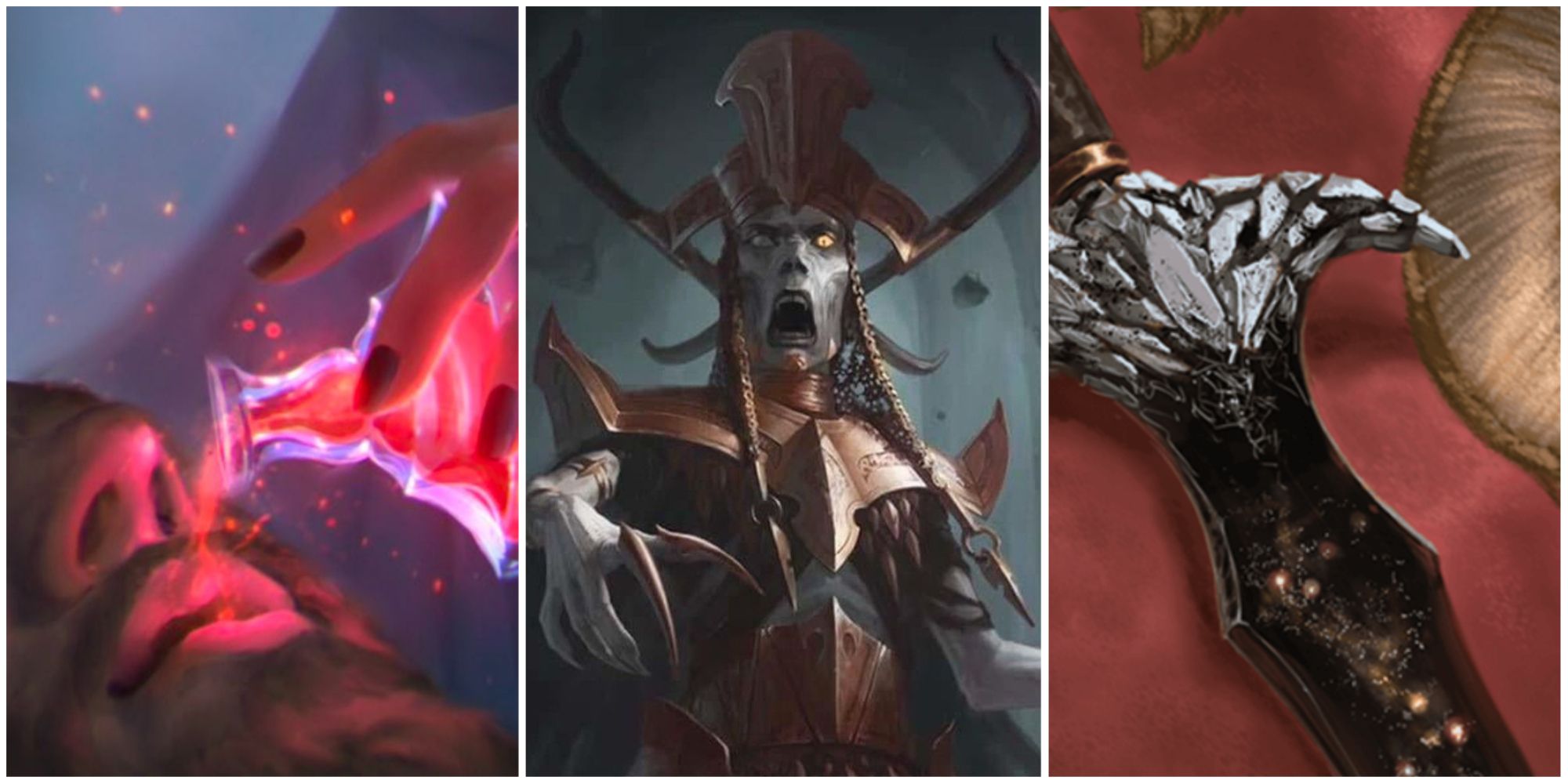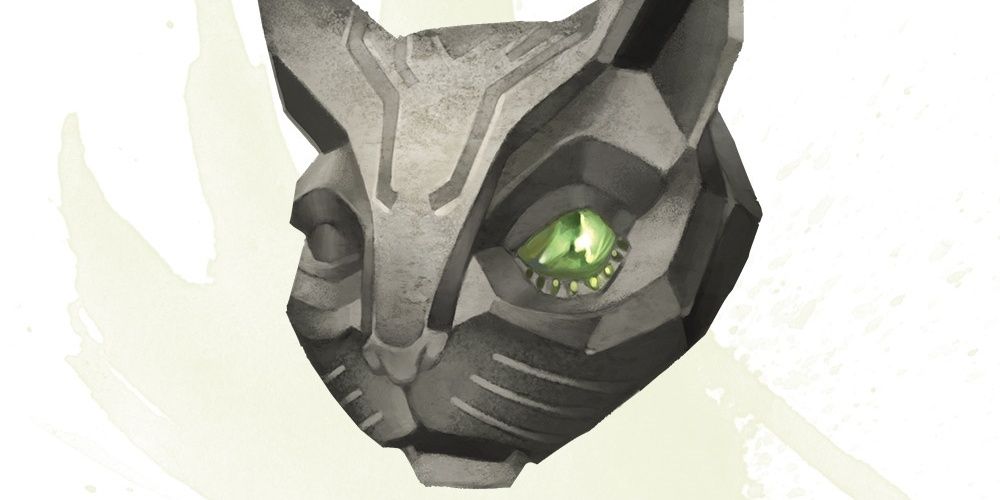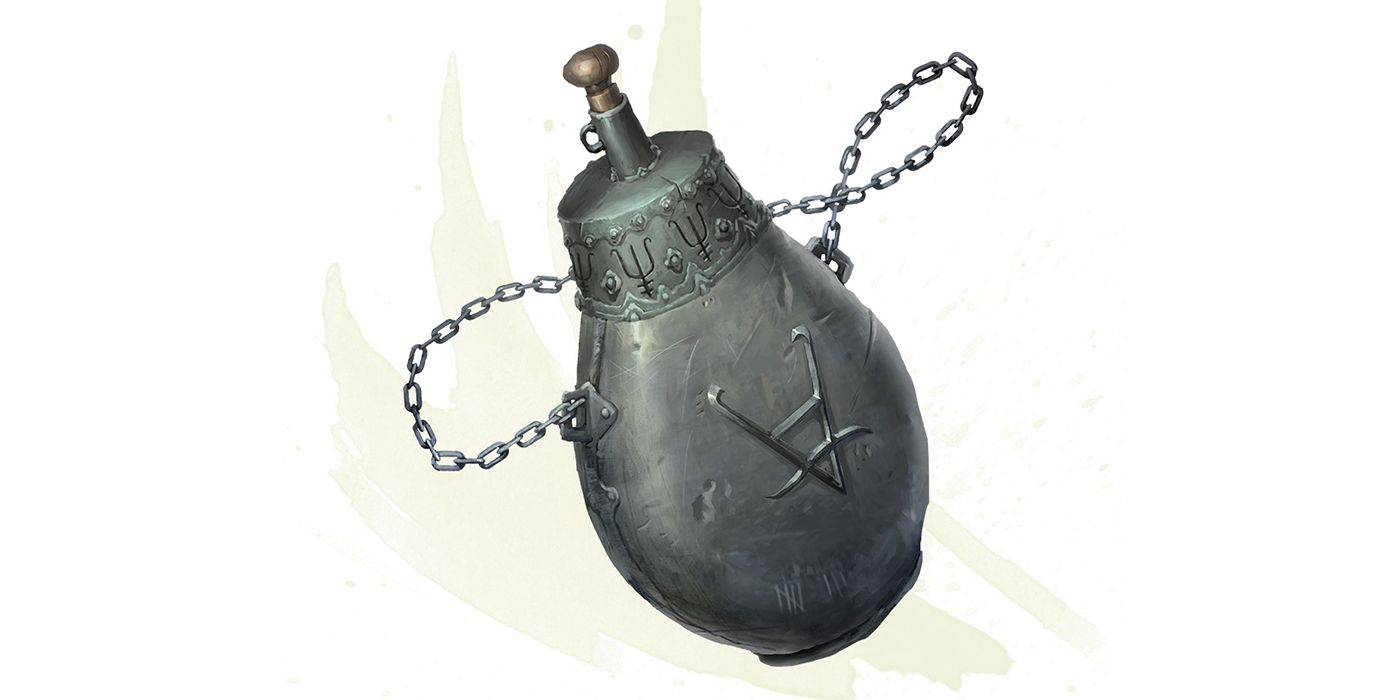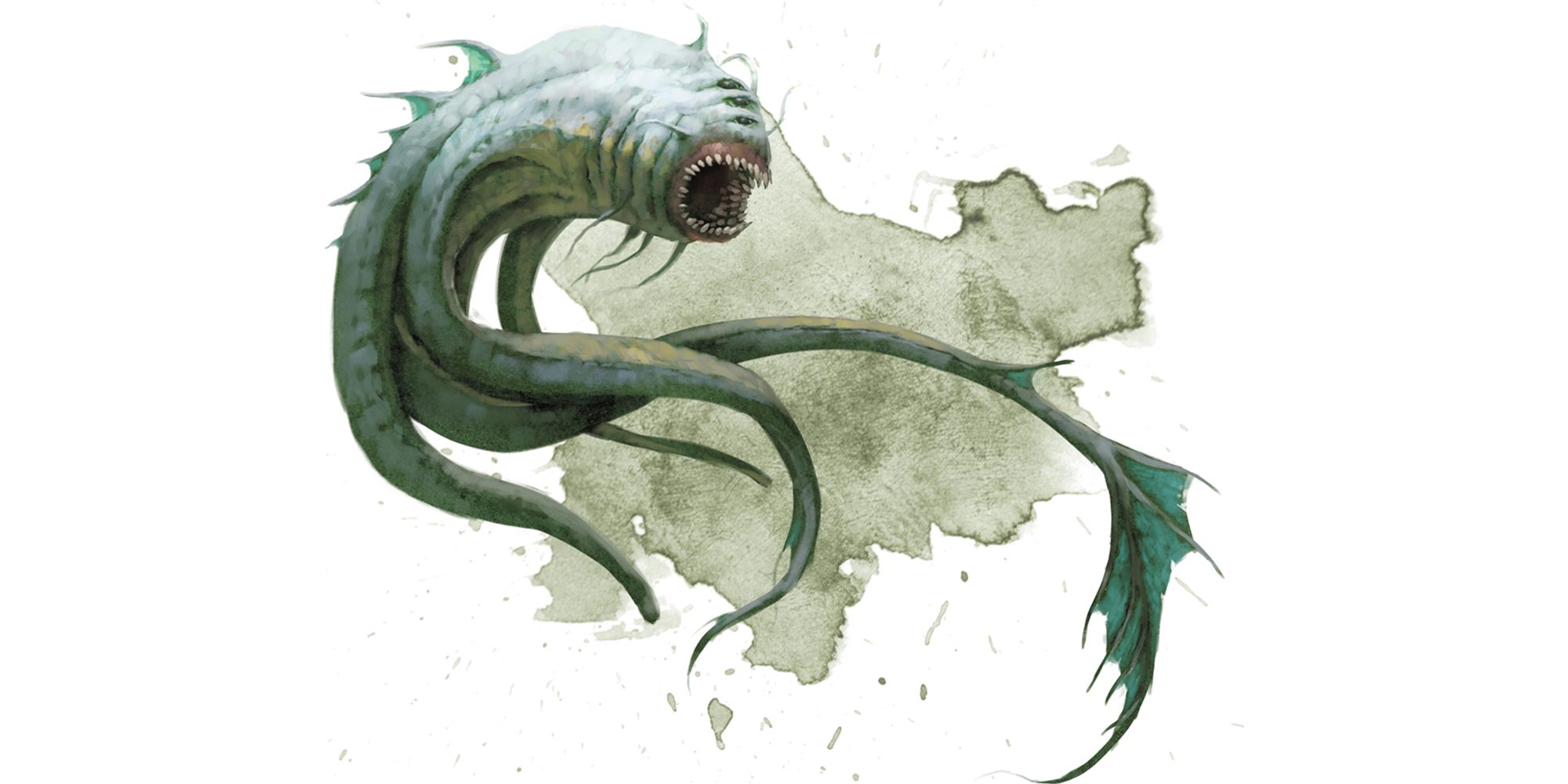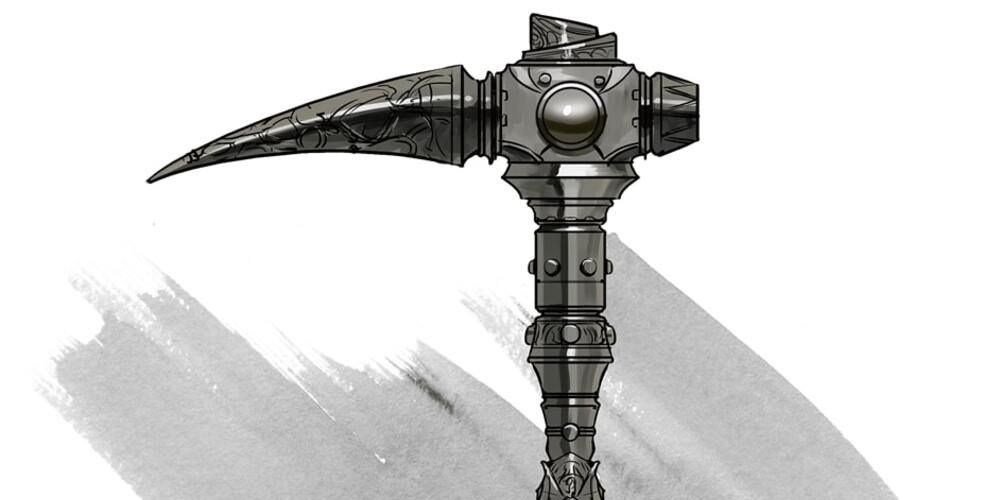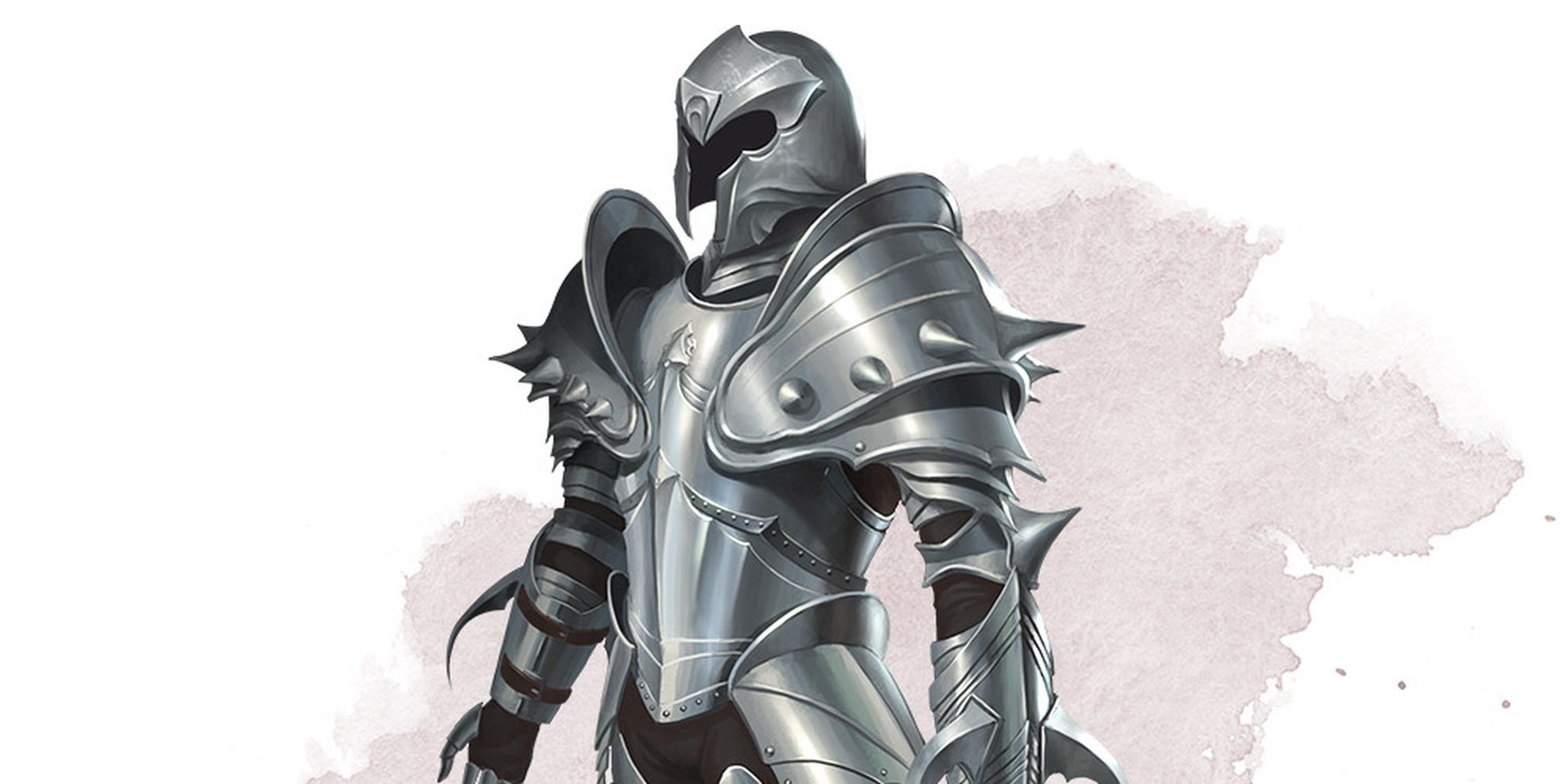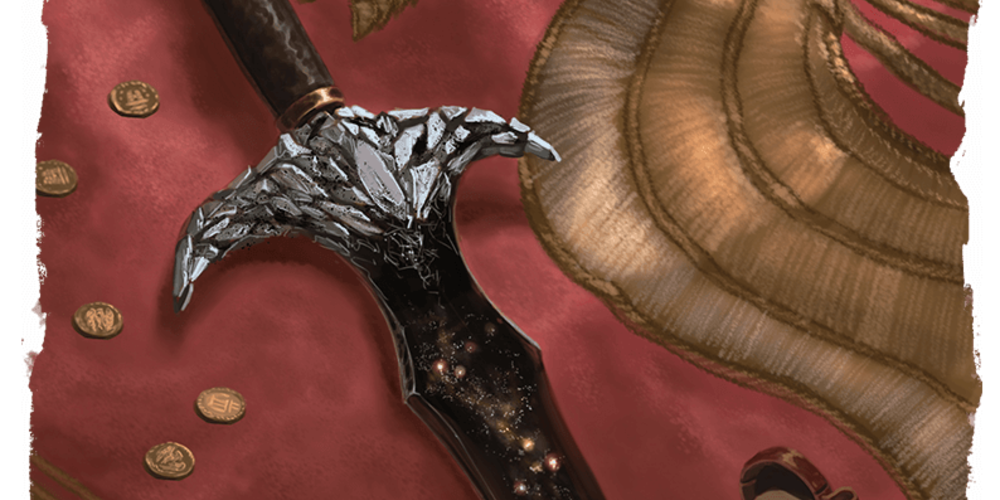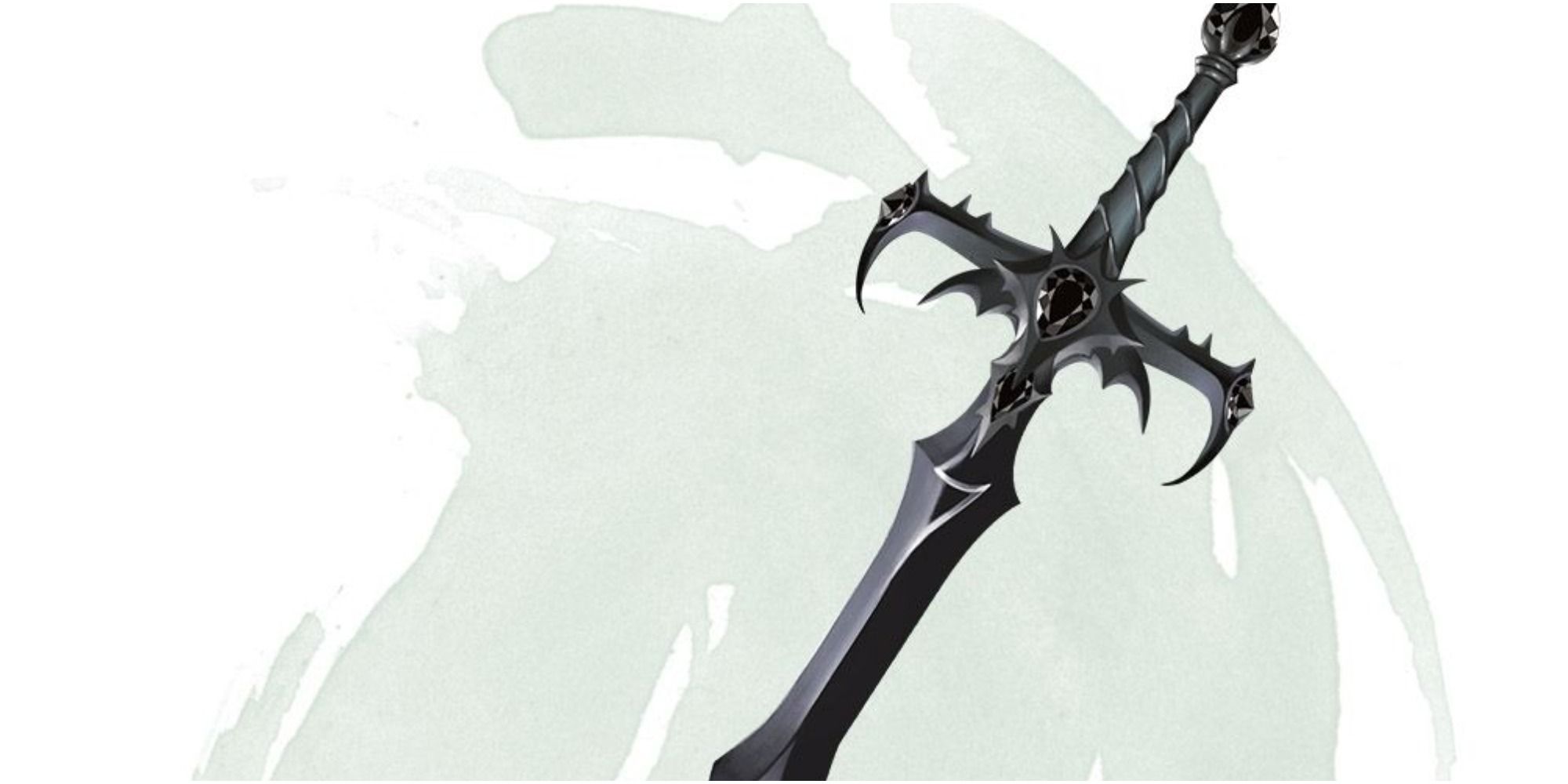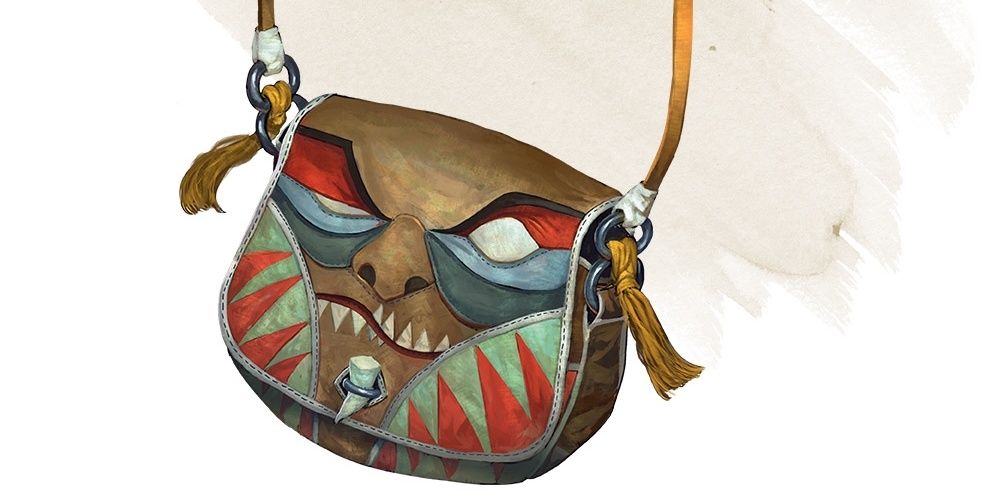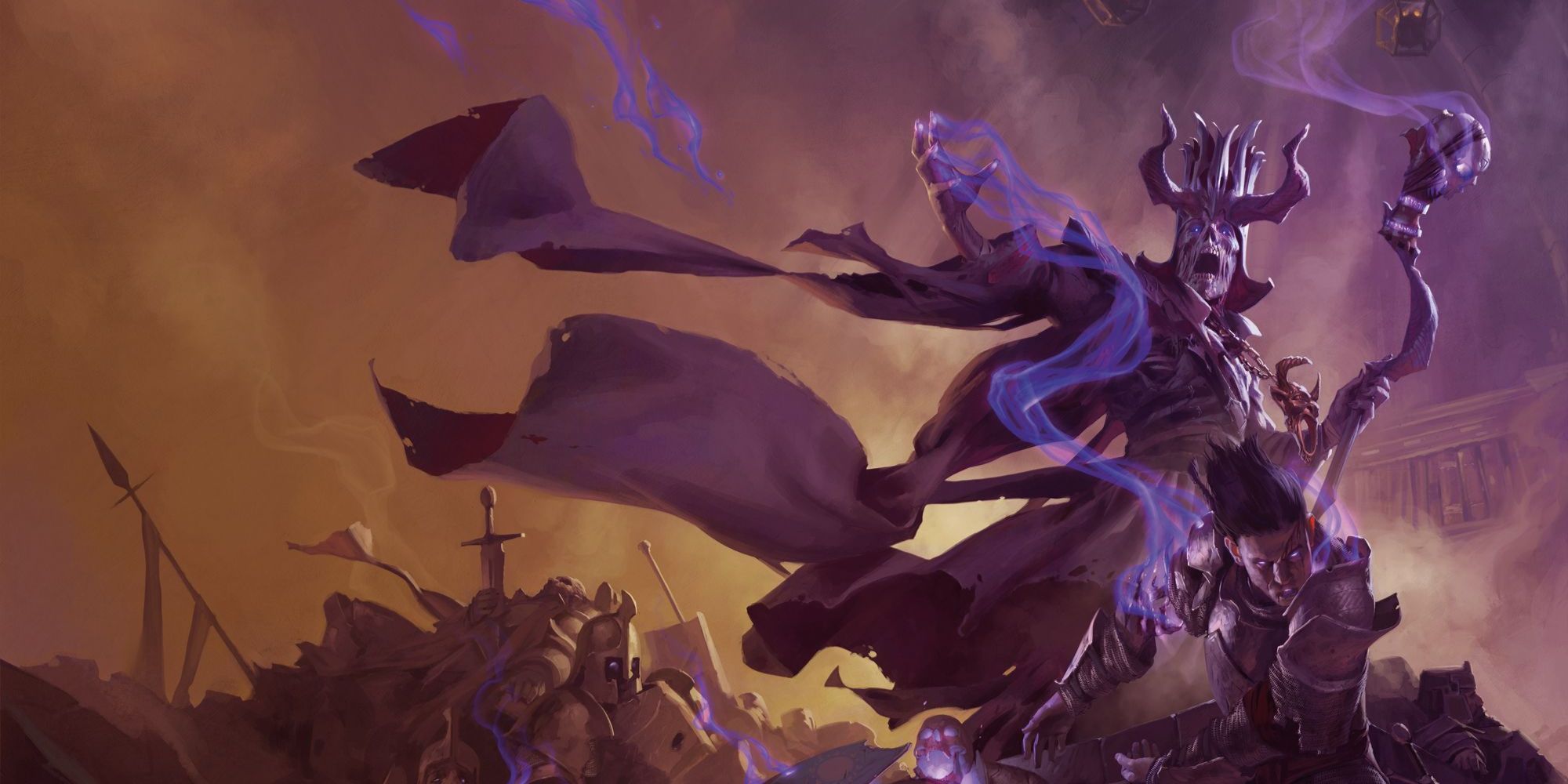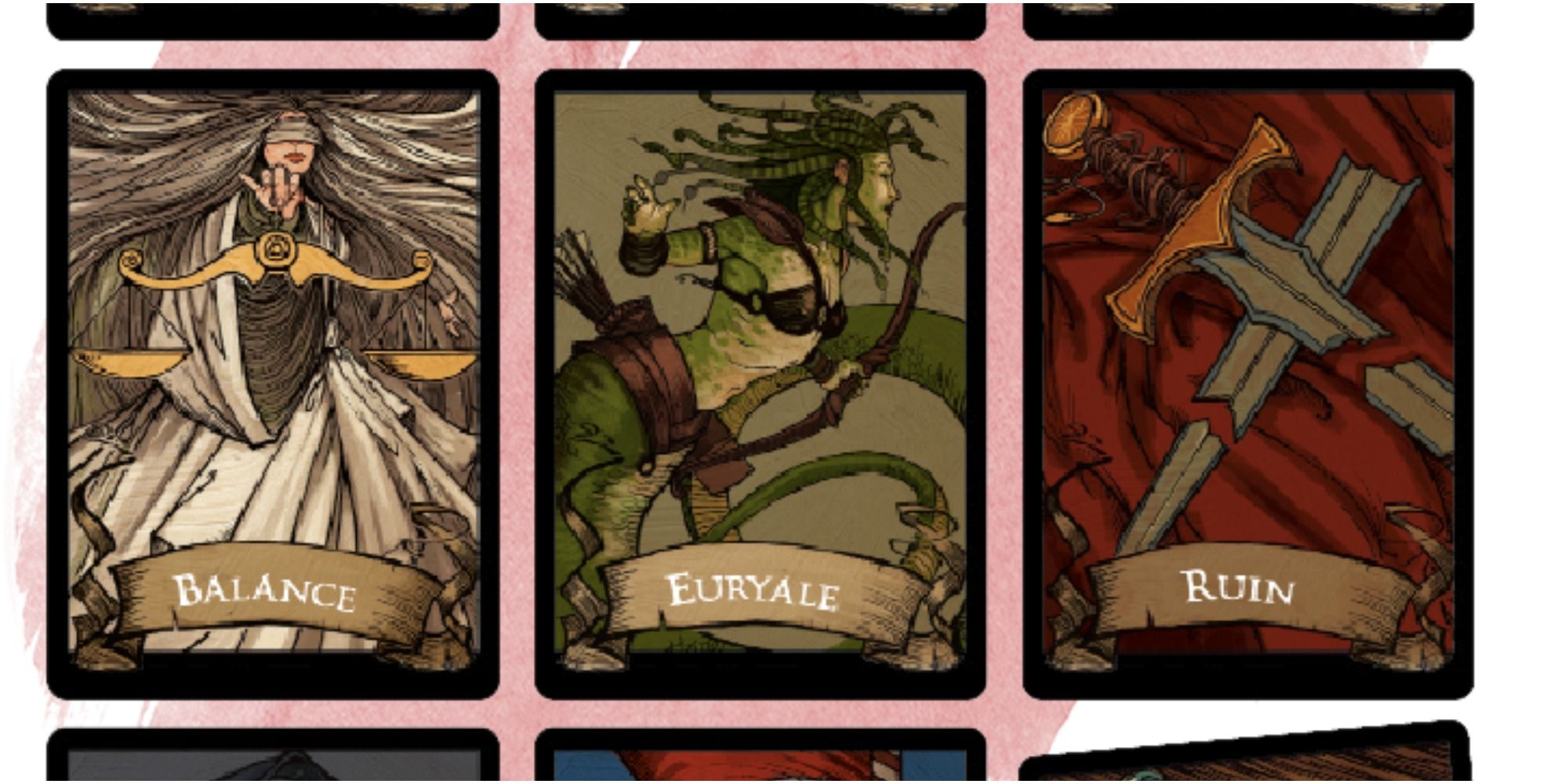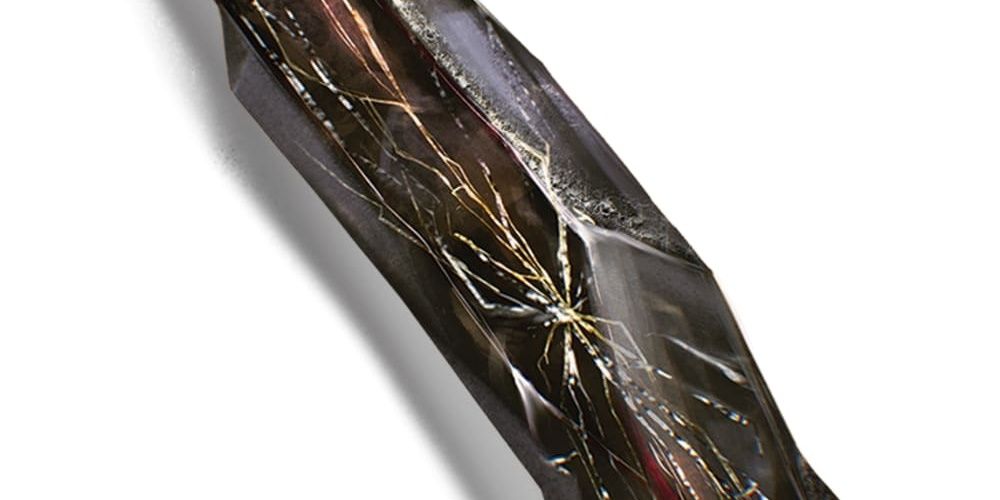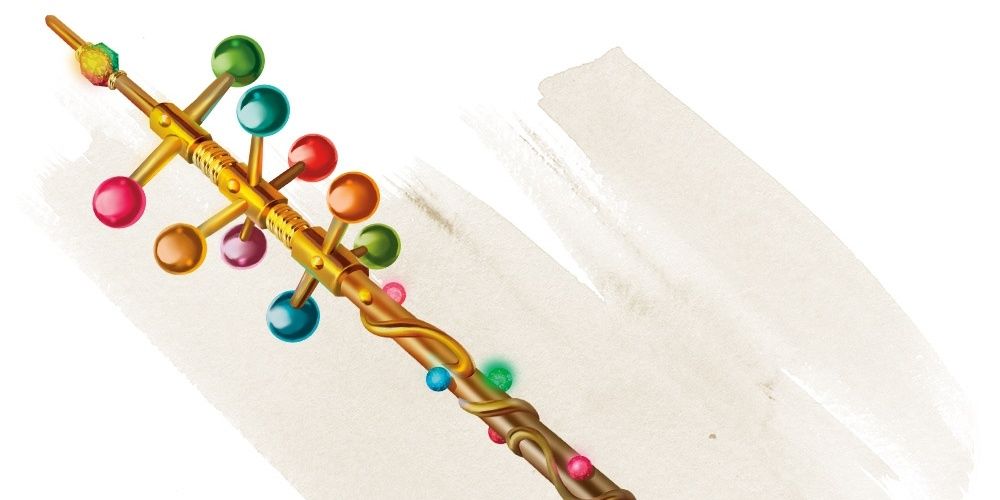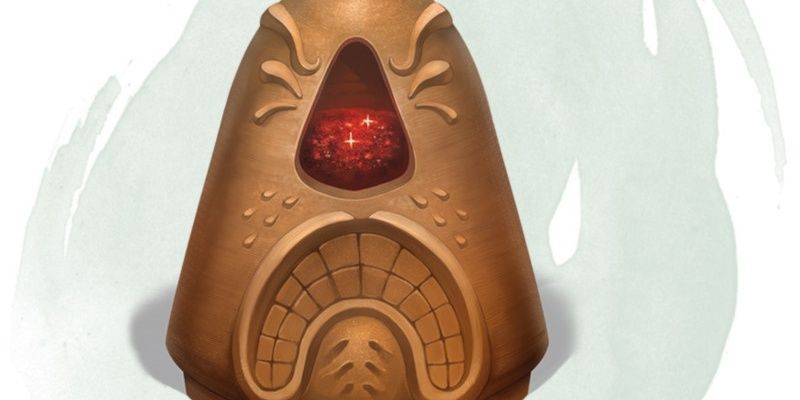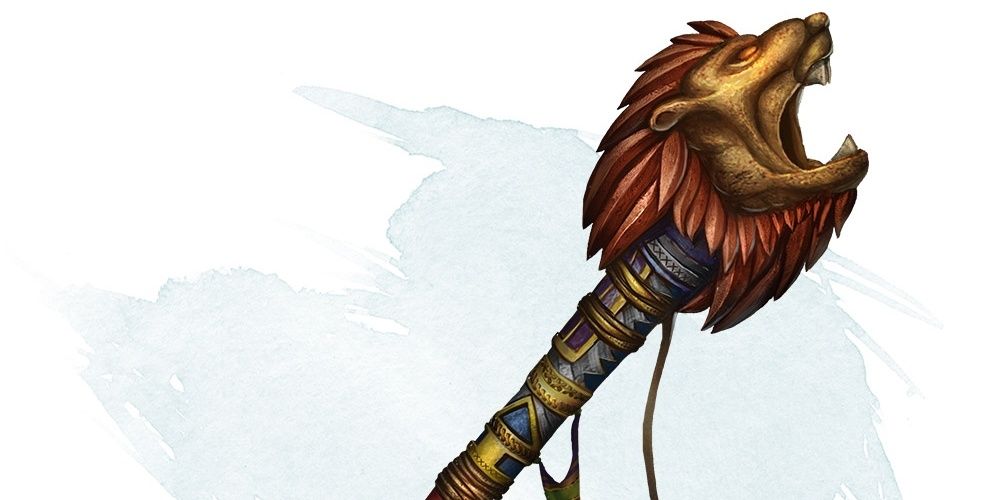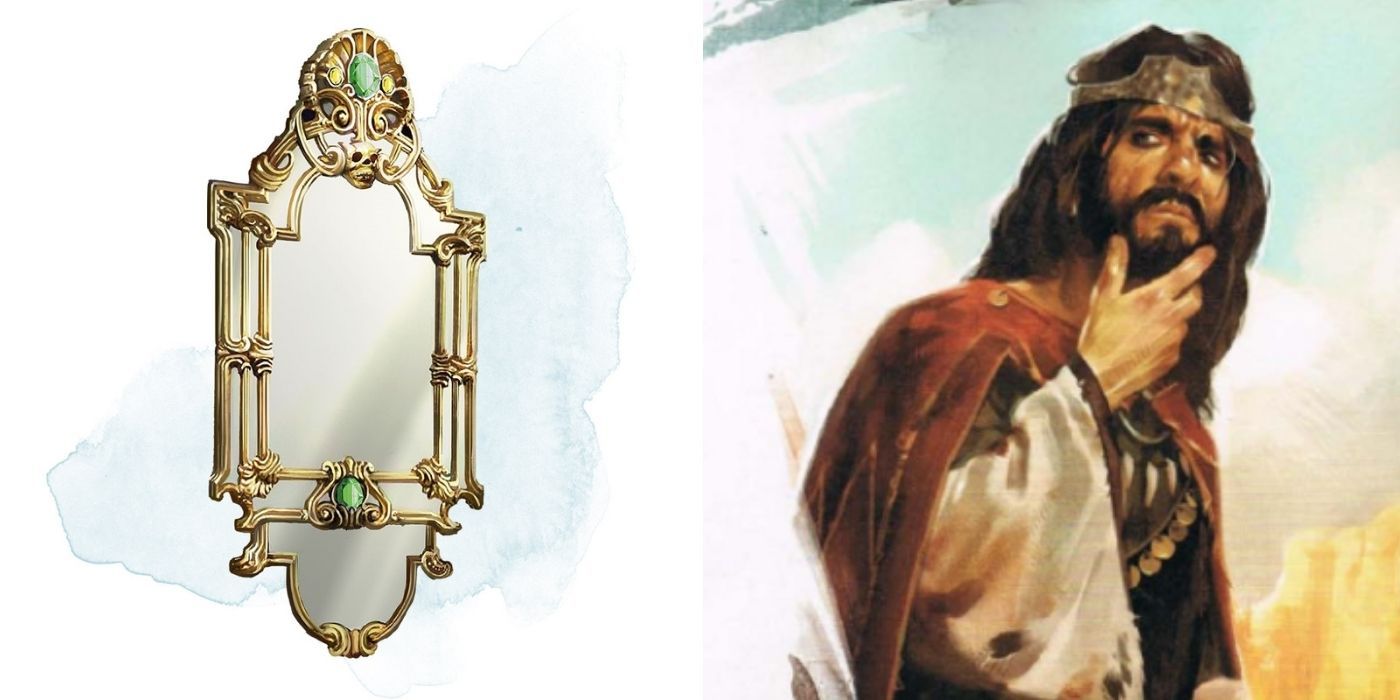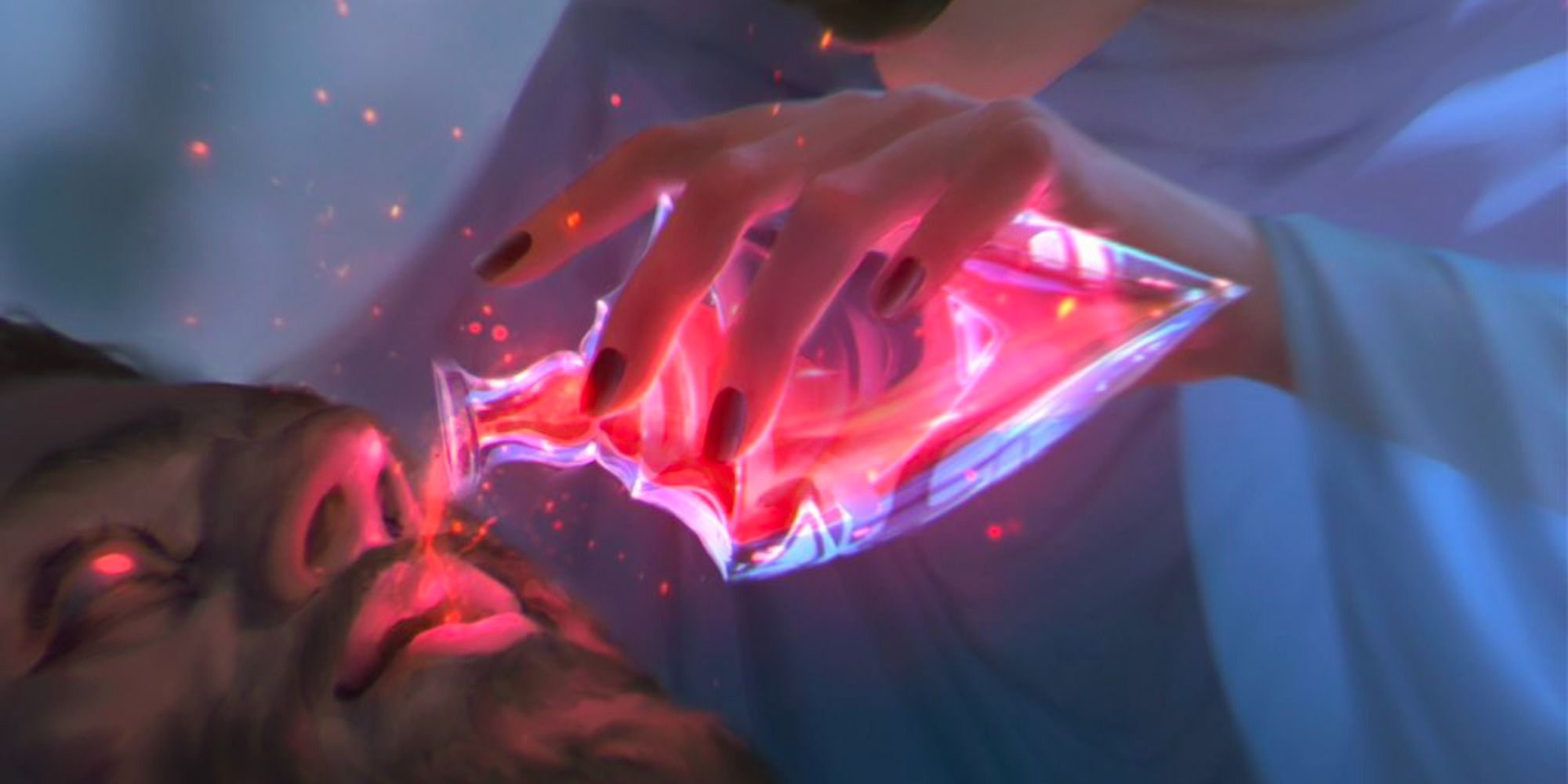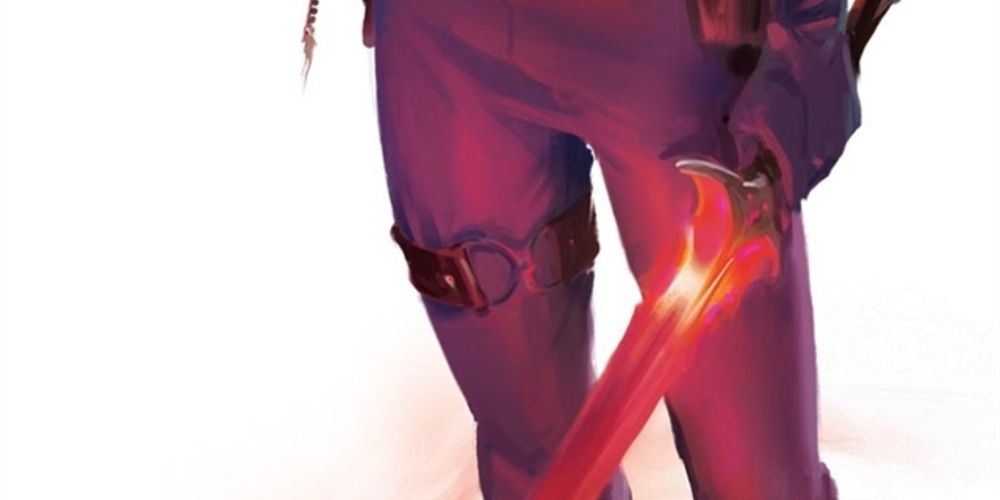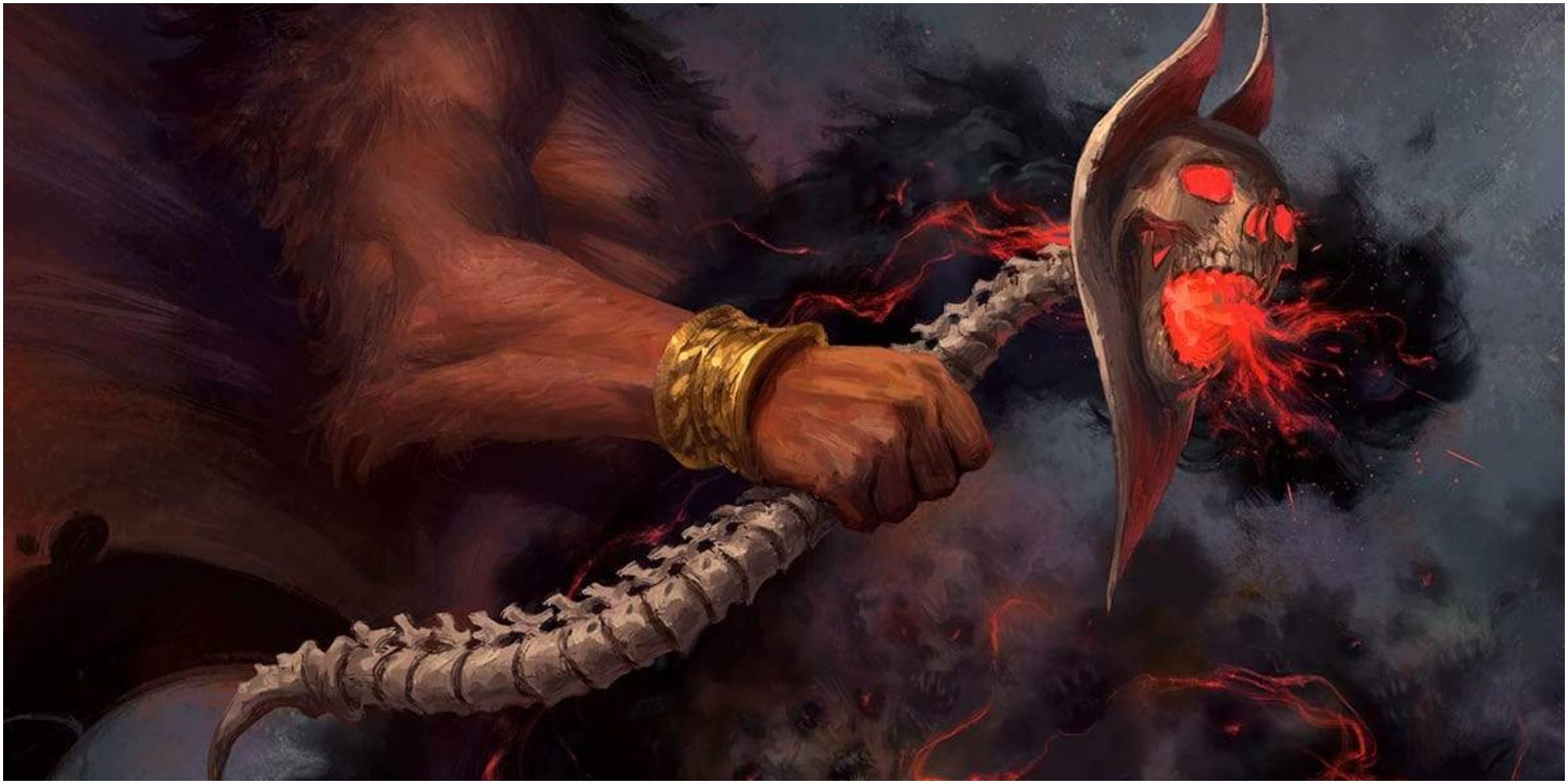Dungeons & Dragons players desire many things out of a good adventure. Terrifying villains, exciting exploits, and an interesting setting to explore are all important elements of such an adventure, but when it comes to the treasure at the end of the road, there's nothing more tantalizing than the allure of a new magic item. It's for exactly this reason that players should also beware of magic items, as there exist more than a few that have less than desirable effects.
A good rule of thumb is that if the item was easy to come across, it's likely not as beneficial as it appeared at first glance. As they say, if it sounds too good to be true, it probably is. With that being said, let's dive into some magic items that are better left buried in whatever dreary refuge you might have found them.
Updated May 3, 2023 by Chris Stomberg: Additional magic items are always being added to D&D with every new release. Books like Dragonlance: Shadow Of The Dragon Queen, Keys From The Golden Vault, and others continue to bring new and varied magic items to the worlds of Dungeons & Dragons. Some of these highly sought-after objects are not as helpful as they might first appear, though. Despite the existence of divination magic like Identify, curses on magic items cannot be detected until it's often too late. That being said, especially discerning adventurers with an eye for what kinds of items could pose a problem might just be able to save their friends' lives before their greed destroys them, but we're not making any promises. After all, adventurers are very greedy folk.
21 Harkon's Bite
This dire wolf tooth hanging from a simple cord necklace might seem benign enough, but it holds the power to send your character on an uncontrollable bloodthirsty rampage. On the surface, Harkon's Bite gives you a +1 to ability checks and saving throws. However, anyone who puts on or takes off the necklace is also afflicted by a curse hidden within the necklace.
The curse causes those who wear the necklace to suffer from werewolf lycanthropy until the dawn after the next full moon. This might sound like a cool idea, but a player whose character is turned into a werewolf typically doesn't retain control of their character while transformed. Instead, the dungeon master decides what escapades your werewolf form gets up to during the duration of your transformation. If we had to guess, your dungeon master's probably planning the murder of innocents for your werewolf future. Have fun dealing with those consequences.
20 Stone Of Good Luck (Stone Of Ill Luck)
The Stone of Good Luck provides the exact same benefit as Harkon's Bite: a +1 to ability checks and saving throws. However, you should be wary of trusting any supposedly lucky stones you come across, as it could instead be a Stone of Ill Luck in disguise.
The curse on this item is particularly nasty, as there is no true hint towards its effect. The curse causes the DM to secretly apply a -2 to ability checks and saving throws your character makes. Consequently, players attuned to such an item believe they are gaining a bonus when in fact they have reduced all of their ability checks and saving throws by one.
Notably, a Stone of Ill Luck is an item that your character isn't willing to part with. You can use this property to determine if you've got a Stone of Good Luck or a Stone of Ill Luck. If a character ever has a reason to try and unattune from a Stone of Good Luck and finds difficulty in doing so, it's a Stone of Ill Luck in disguise.
19 Iron Flask
The Iron Flask is a powerful legendary item and one of the few legendary items that doesn't require attunement. As an action, you can open the flask and cause a target that's from another plane of existence to make a DC 17 Wisdom saving throw. On a failure, the target is sucked into the flask and trapped there. As an action, you can open the flask while a creature is trapped inside of it and release the creature. A creature released in this way must obey the commands of its captors for one hour.
After the hour has passed, the creature returns to its normal behavior. Altogether, the Iron Flask is a great magic item and especially handy to have at your side against all kinds of foes. However, the danger this item poses lies in whether the flask you find already has a creature trapped inside of it.
There is no way to determine the exact creature that's trapped inside, but an identify spell will reveal if something's in there. There are a number of creatures above ten Challenge Rating that could inhabit the flask, so take caution regarding when to unleash the beast. It might act as your ally at first, but you could ultimately end up with an even larger problem on your hands.
18 Stone Of Golorr
The Stone of Golorr is among the most highly sought-after items in all of D&D due to its artifact status. That being said, there are many evil artifacts that are better left untouched, and this stone is probably one of them. The stone is actually an evil ancient aberration known as an aboleth named Golorr that was turned into a stone by powerful magic. Like many artifacts, the stone comes with one randomly determined minor beneficial property and one randomly determined minor detrimental property.
Beyond that, it allows its user to cast the fifth-level spell Legend Lore to communicate with the aboleth and possibly learn important information. However, this information trade is a two-way street. The stone automatically knows the deepest desires of whoever wields it, and it wishes to gather as much information as it can.
As a result, it tends to try to change hands often. If its wielder refuses to pass it along, the stone may just take control of them and force them to release it. Lastly, a creature who becomes unattuned to the stone must make a DC 16 Wisdom saving throw or lose all memory of possessing the stone, as well as whatever information you learned from it.
17 Ironfang
This legendary war pick is infused with the power Ogremoch: The Prince of Evil Earth. The pick provides a +2 bonus to attack and damage rolls and also deals an additional 1d8 thunder damage on a successful attack. The pick also allows you to cast the 2nd level spell Shatter up to three times per day.
On top of these powerful combat benefits, Ironfang also provides its wielder with a number of passive bonuses that signify its attunement with the earth. These include the ability to speak Terran, resistance to acid damage, tremorsense with a range of 60 feet, and the ability to cast Dominate Monster on an earth elemental once per day. Lastly, you can sense the presence of precious metals and stones within 60 feet of you.
The weapon can also be used to create another magic item known as a Devastation Orb of earth once per day. When destroyed, this orb releases the effects of an earthquake spell. Despite all of these amazing benefits, Ironfang also inflicts a terrible flaw on any brave enough to grasp it. The flaw is "I like to break things and cause ruin." Any character who properly portrays this flaw is unlikely to have friends for long.
16 Demon Armor
This armor, composed of interlocking, jagged metal plates, will surely be appealing to any resident edgelords in your party, but its curse comes with a high cost given the wrong circumstances. The Demon Armor is plate metal armor that provides its wearer with an additional +1 bonus to their AC (armor class) while also granting them the ability to speak Abyssal: the language of demons. In a pinch, the armor's gauntlets can also be used as slashing +1 magic weapons that deal 1d8 damage.
Benefits aside though, the armor is cursed so that its wearer cannot remove it. Worst of all, while wearing the armor, you have disadvantage on attack rolls against demons as well as disadvantage on saving throws against their spell save DCs and inherent abilities. Crafty creatures, those demons.
15 Blackrazor
Blackrazor is a legendary +3 greatsword and among the most powerful weapons ever forged. It's also a sentient weapon that commands its wielder to feed it souls. The sword believes that its purpose is to speed creation along towards its ultimate destiny of total obliteration. Creatures whose souls are devoured by Blackrazor can only be restored by the means of a Wish spell.
The sword has the ability to cast haste on you, but it chooses when to do so. This is great because it doesn't require your concentration, but not so great because the sword remains in complete control of when it's used. By far the sword's best boon though is that, whenever you slay a creature with it, you gain temporary hit points equal to the creature's hit point maximum for the next 24 hours. As if that weren't ridiculous enough, you have advantage on attack rolls, saving throws, and ability checks while any of the temporary hit points remain.
All things considered, this is an incredibly powerful item that is difficult to overlook. However, you must remember that its purpose is undeniably evil. As such, its use can only end in misery for whoever believes themself brave enough to wield it.
14 Sword Of Vengeance
Anyone who is familiar with how the bounded accuracy mathematics of D&D work knows magic items that provide a bonus to your attack and damage rolls are incredibly good. The sword of vengeance is one such item, but it comes at a terrible cost. Unfortunately, this is a cursed magic item that forces you to make a Wisdom saving throw any time any enemy damages you. If you fail this saving throw, you are required to attack the enemy who damaged you until they are vanquished.
While this might not seem like an incredible cost at first glance, what about those moments when you need to spend your turn saving another character's life, interacting with a triggered trap, or, dungeon master forbid, running for your character's life? Thankfully, a remove curse or banishment spell will purge the vengeance from this sword, turning it into a regular old +1 weapon.
13 Armor Of Vulnerability
As this armor's name suggests, it's not the best at keeping its wearer safe. The armor of vulnerability gives you resistance to one of the three most common damage types in the game: bludgeoning, piercing, or slashing. However, it comes with a curse that provides you with vulnerability to the two common damage types it doesn't shield you against.
This armor is one two-for-one trade your character is probably better off leaving on the table. Unfortunately, a remove curse spell will not permanently disable the curse that's placed upon anyone who picks up this plate metal, so it's better off left wherever you found it or, if you're a more unscrupulous type, pawned off to some poor shopkeep.
12 Bag Of Devouring
While the previous two items might land your character in hot water, chances are they won't outright kill you. Sadly, the bag of devouring just might. This item that closely resembles the beloved bag of holding is actually a gateway into the stomach of some bizarre creature from beyond the stars. As such, placing anything inside of it leads to the item turning up in another plane of existence.
Even worse, when a living creature reaches inside of it, there's a 50 percent chance that the bag pulls them in. If this happens, the poor sap who got pulled in gets one chance to beat a DC 15 Strength check to pull themselves out. Furthermore, anyone nearby can also try to pull them out while also exposing themselves to the 50 percent chance of being pulled inside the bag with a successful DC 20 Strength check. As you can imagine, with a couple of bad rolls, this lowly magic item can quickly lead to a TPK (total party kill).
11 Amulet Of The Black Skull
This amulet belongs to none other than the universe traveling lich and great evil wizard Acererak. Using it, Acererak can teleport into and out of his dastardly Tomb of the Nine Gods, which is otherwise blocked from all means of teleportation. The amulet might also be used by other creatures to teleport up to 100 feet to a location with which they are already familiar; however, any creature who uses it in this manner and isn't undead has to make a DC 16 Constitution saving throw.
On a failure, the creature suffers one of six debilitating effects based on a d100 dice roll. These effects range from making healing magic ineffective on you, instantly causing your character to be paralyzed or petrified, or even teleporting you forward without all of your other items and gear. On top of all this, possession of the amulet is likely to draw the ire of its rightful owner, Acererak. Do you really want a universe travelling lich hunting you down?
10 Deck Of Many Things
Speaking of TPKs, here's yet another item that's much more notorious for causing them. The deck of many things is the magic item of every dungeon master's nightmares, often quickly leading to the complete derailment of whatever task the party had at hand. The deck is filled with either 13 or 22 cards, each of them providing powerful ramifications if drawn. Some of these effects are incredibly beneficial, such as gaining a level or receiving a fortune. Others, though, are not so nice.
There are multiple cards that spell immediate financial ruin, multiple that can lead to death without chance of revival, and two that create a powerful adversary that a character must then defeat or die trying. At the end of the day, the risks outweigh the rewards. Then again, surely just one roll of the die will be fine...
9 Shard Of Xeluan
This is a rather strange magic item in that it increases its wielder's Strength score while also providing a +1 bonus to spell attack rolls. Typically, spellcasters dump their Strength statistic, so there aren't many classes that can truly take full advantage of this unique item. That being said, the Shard does increase your Strength by four up to a total of 22, and that's nothing to sneeze at.
Despite these powerful boons, the Shard's curse pretty much undoes any benefits you may be seeking to get out of it. Whenever you roll a one on an attack roll, ability check, or saving throw, the Shard forces you to roll a d6 on the Shard misfortunes table to see what happens.
Some examples of misfortunes include being poisoned until the next dawn, becoming stunned for a turn, firing magic missiles at random creatures around you or yourself, and more. While these misfortunes are unlikely to result in your death, they can certainly put you in a tight spot very quickly. Consequently, the Shard of Xeluan is better left on the shelf.
8 Wand Of Wonder
This is a hilarious magic item that spells catastrophe. Whether it's for you or your foes though is another question entirely. When you cast a spell from the wand, you then roll a d100 to discover what happens.
Effects range from casting powerful spells like fireball, slow, and lightning bolt, to shooting a stream of gems out like a machine gun, stunning yourself for a turn, or turning yourself to stone. Despite its awesome and comical powers, the wand of wonder is better left at home.
7 Dust Of Disappearance (Dust Of Sneezing And Choking)
This is perhaps the most innocuous item on the list, but also very deadly. Dust of Disappearance is a magic item that allows you to turn yourself and your allies invisible for a number of minutes. That's all fine and good, but it's this dust's strange relation to the dust of sneezing and choking that makes it not worth bothering with in the first place. Any dust of sneezing and choking you find reveals itself to be Dust of Disappearance, even under the close inspection of an identify spell.
Any creatures exposed to dust of sneezing and choking must make a DC 15 constitution saving throw or become incapacitated as they hack uncontrollably. In other words, they lose their turns until they can succeed on the saving throw at the end of a later turn. Whether you're trying to be sneaky or pulling a fast one during a combat encounter, this dust is a great way to foil your party's own plans.
6 Horn Of Blasting
The horn of blasting is a great way to deal 5d6 area of effect thunder damage and deafen opponents. Sounds pretty great, so what's the problem?
Well, each time a character uses the horn, there's a 20 percent chance that it explodes in their face. This explosion deals twice as much fire damage to the wielder. Need we really say more?
5 Mirror Of Life Trapping
Beware of any suspicious mirrors randomly hanging in dungeons. Taking a direct look at one might just land you on your reflection's side of things. This is exactly how the mirror of life trapping functions, forcing any creature who looks directly into it to make a DC 15 charisma saving throw or be imprisoned inside of one of its 12 extradimensional holding cells.
Once trapped in this way, the only methods of escape are through planar travel magic or shattering the mirror itself. However, be careful of this second method. Shattering the mirror will also release whatever other nasty creatures happen to be imprisoned inside of it.
4 Potion Of Poison (Potion Of Healing)
Like the dust of sneezing and choking, a potion of poison appears to be a potion of healing. Unlike the dust, an identify spell reveals its true sinister nature. Despite this, it's not very common that you find players casting identify magic on their potions of healing. As a result, potions of poison are a very real threat.
Imbibing one of these nasty red potions while at low health and in the middle of a combat encounter is a great way to dig your character an early grave. Especially seeing as if you fail the initial Constitution saving throw, you must then succeed on three future ones to stop taking damage from it. Good luck with those death saving throws!
3 Nepenthe
This longsword provides a +3 bonus to attack and damage rolls while also dealing an additional 2d10 radiant damage to any undead or fiend smitten with it. So far so good, right? In addition, the sword provides powerful protection to its wielder and their allies by creating a ten-foot radius sphere around you, inside of which you and your allies have advantage on saving throws against spells and magical effects.
Paladins with 17 levels in the class who wield the sword can extend this aura out to a range of 30 feet. All things considered, it seems like an altogether well-meaning weapon despite the sword's brilliant red blade. However, the sword has a bit of a personality issue.
You see, Nepenthe is a sentient neutral evil longsword that has beheaded thousands of criminals, both guilty and innocent, in its lifetime. As a result, it's unable to discern the innocent from the guilty. The sword craves bringing its so-called 'justice' to those it encounters and will stop for nothing to sate its bloodthirst. As you can imagine, this is likely to result in a plethora of issues for anyone who wields it.
2 Wand Of Orcus
This unmistakable wand belongs to none other than the demon lord of undeath: Orcus. The wand was originally forged from the skull and spine of a long-lost hero whose soul Orcus keeps imprisoned in a secret place. Even attempts to attune to this wand can result in the instant death of your character as any creature who attempts to attune to it must make a DC 17 Constitution saving throw taking 10d6 necrotic damage or half that much on a success. If this damage reduces you to zero hit points, you instantly rise as a zombie.
The wand is a +3 magic mace that deals an additional 2d12 necrotic damage on a hit. It also allows you to cast a number of powerful necromancy spells, including finger of death and power word kill. In addition, it comes with six other randomly determined powerful properties that further strengthen it. However, all of this pales in comparison to the wand's ability to call forth 500 hit points worth of undead skeletons and zombies to serve its wielder.
All things considered, this could easily be considered the most powerful magic item in all of Dungeons & Dragons. Naturally, the wand is sentient and has a cold and calculating personality that always promises its wielder grandiose vows that it has no intention of fulfilling. In the end, the wand only acts to serve its one true master. After all, it is called the wand of Orcus.

